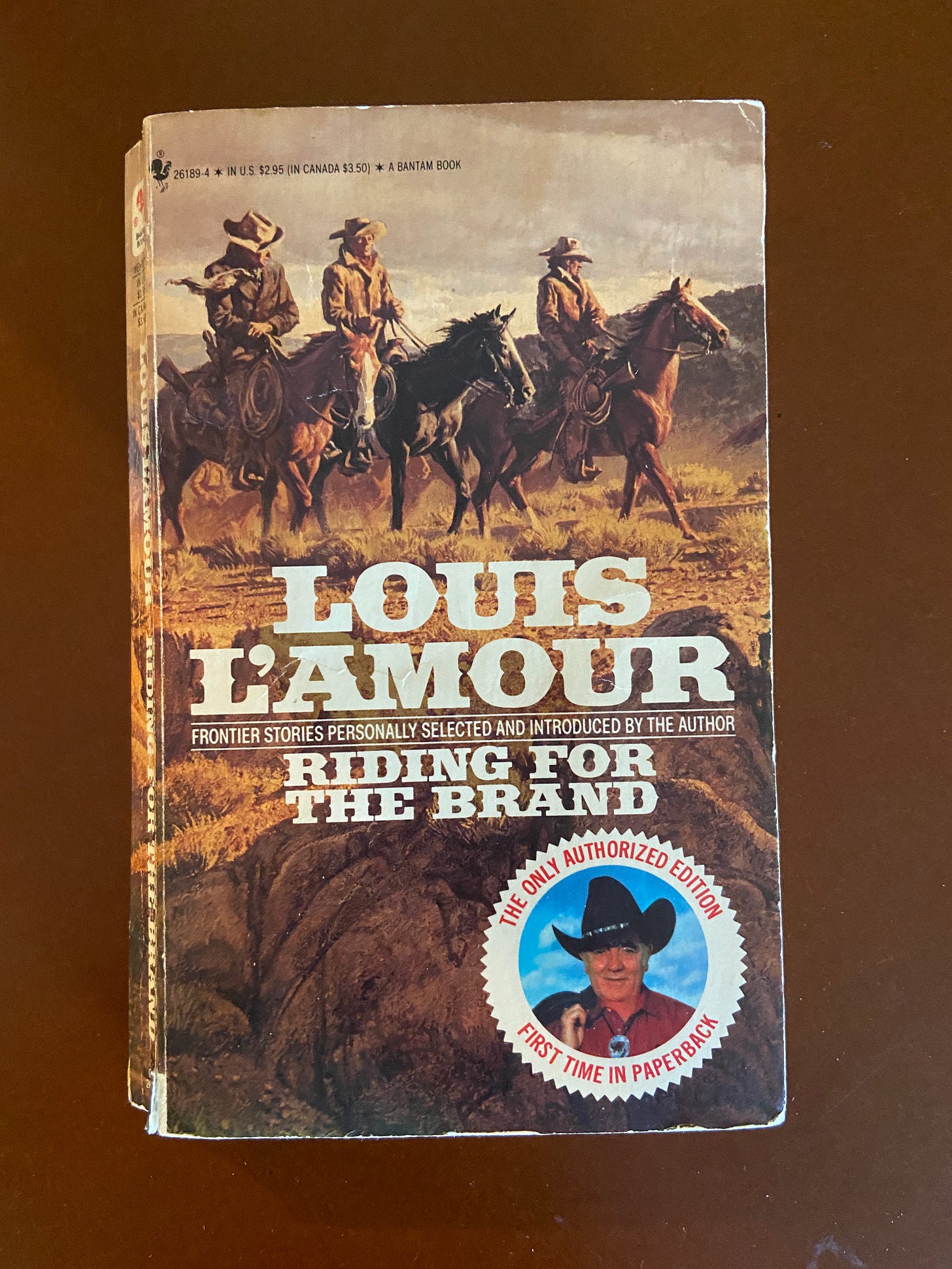I’ll admit it. The only time I’d ever heard about Louis L’Amour was in a throwaway line in a catchy Jimmy Buffett song. (You’ll find it exactly thirty seconds in.) Jimmy was a famously well-read dude with a nose for good stories, so maybe I was missing out on something.
In May I spent a night camping at Lake Anita State Park in Iowa. While there I happened upon a little lending library where not one—but two—yellowing Louis L’Amour titles were up for adoption. I pulled out Showdown at Yellow Butte and Riding for the Brand.

For those unfamiliar with L’Amour, he was an extraordinarily prolific American novelist, whose “frontier stories” were—and still are—extremely popular. Personally I’ve never been a huge fan of cowboy yarns nor spaghetti westerns. But returning to my site, I leaned back on my trusty Alight camp chair and decided to give Showdown a fair shake.
Almost immediately, L’Amour earned three strikes. First, in the span of only four pages of exposition, he introduced a motley cast of 348 characters. The traits and relations between them were pretty hard to process. (Although, in fairness, that might have been the mind-numbing, 11-hour drive to get to Lake Anita.)
Secondly, the characters converse with the campy dialect and turns-of-phrase one might imagine were commonplace on the open range. While certainly effective for setting a scene, I had flashbacks of being a fifth grader trying to decipher what the huck Finn was saying to Sawyer.
Finally—and this is no fault of L’Amour—I am a 21st-century suburbanite. For better or worse, I know nothing of rifles, riding horses, or wrangling. I don’t have clue about spurs, saloons, or sarsaparilla. (Although I do know a thing or two about applicable alliteration.) So in terms of personal relevance, Showdown wasn’t really hitting any notes with me early on.
And yet, I kept reading. Showdown at Yellow Butte follows the story of Tom Kedrick, a former military officer who is employed to lead a band of hired guns to run squatters off government land. But guided by a thoughtful and empathetic ethos, Kedrick soon understands the situation much differently and—eventually—puts himself in serious peril in the name of justice.
I finished the book in only a few days and actually enjoyed it immensely. After the first few chapters, the characters eventually sort themselves out and the dialogue becomes much easier to follow. More importantly, though, you begin to feel a gravitational pull toward the bare-bones existence and accepted morays of the time.
Yes, this is a highly romanticized and overly simplified profile of frontier life. But if only a fraction is anchored in some reality, stories like Showdown still hold some value.
Riding for the Brand is a collection of short stories by L’Amour. I enjoyed it even more than Showdown—so much so I spent the better part of my 50th birthday weekend rifling through one tale after another. More and more I found myself relishing the folksy language and colloquialisms.
Having scared off some vaguely scrupulous strangers in Barney Take a Hand, for example, Barney Shaw mutters, “I know a skunk by the smell.” And when Cat Mcleaod welcomes Rock Casady to his valley in His Brother’s Debt, he remarks, “Glad to have you, son. This sure ain’t no country for a yound feller though. It’s a huntin’ an’ fishin’ country, but no women here, an’ no likker.” And in Fork Your Own Broncs, hero Mac Marcy is accused of being a, “plumb salty hombre.”
That, I thought, is me in a nutshell. That’s the kind of thing I would wear printed on a…






